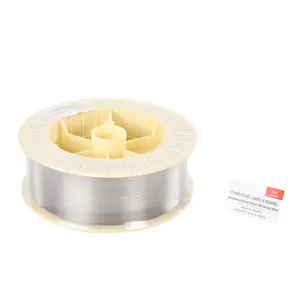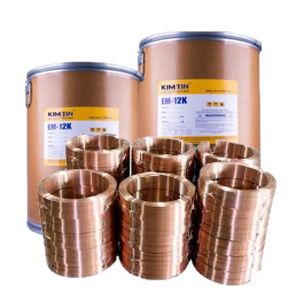

ATLANTIC Production Line Welding Wire Factory Price CHM-309L ER309L CO2 Solid MIG Stainless Steel Wire

CHINA NOKE Brand High Quality Mild Steel Copper Coated 0.8MM 1.0MM 1.2MM 1.6MM ER70S-6 CO2 MIG Welding Wire























Submerged arc welding (SAW) wire forms a critical component in the SAW welding process, a method renowned for its proficiency in joining metals with precision and strength. This introduction delves into the nuances of saw welding wire, highlighting its types, applications, and specifications essential for informed selection and use.
The selection of saw welding wire is pivotal to the welding outcome. Among the variety, em12k saw wire and ea2 saw wire are prominent, each tailored for specific welding tasks and base metals. While EM12K is known for its balanced performance in mild steel welding, EA2 is often chosen for higher tensile strength requirements. Additionally, submerged arc welding wire variants like EL8 are designed for specific applications, with the el8 saw wire specification indicating suitability for clean surface applications due to its low carbon content.
The versatility of saw welding wire is evident in its wide range of applications. From automotive manufacturing to the construction of ships and infrastructure, these wires are integral to creating robust metal structures. The saw welding electrode specification is a critical reference point that ensures the wire's compatibility with the metal being welded, thus ensuring integrity and strength in the final weld.
Materials used in saw filler wire are chosen for their ability to enhance the welding process. The core often contains deoxidizing and fluxing agents, which are instrumental in minimizing splatter and improving the mechanical properties of the weld. The saw welding filler wire specification provides insight into the material composition, enabling welders to select a wire that offers the best combination of strength and efficiency for their specific operation.
Selecting the correct saw welding wire involves understanding the saw welding wire specification. Factors such as wire diameter and the specific type of wire play a significant role in the success of the welding operation. For instance, the esab saw wire is known for its consistent performance and compatibility with different welding systems, making it a reliable choice for professionals seeking optimal results.
In conclusion, the proper selection and application of saw welding wire are paramount in achieving a high-quality weld. While submerged arc wire types like EM12K, EA2, and EL8 cater to various welding requirements, understanding their specifications ensures that the chosen wire maximizes productivity and enhances the overall quality of the welding project.